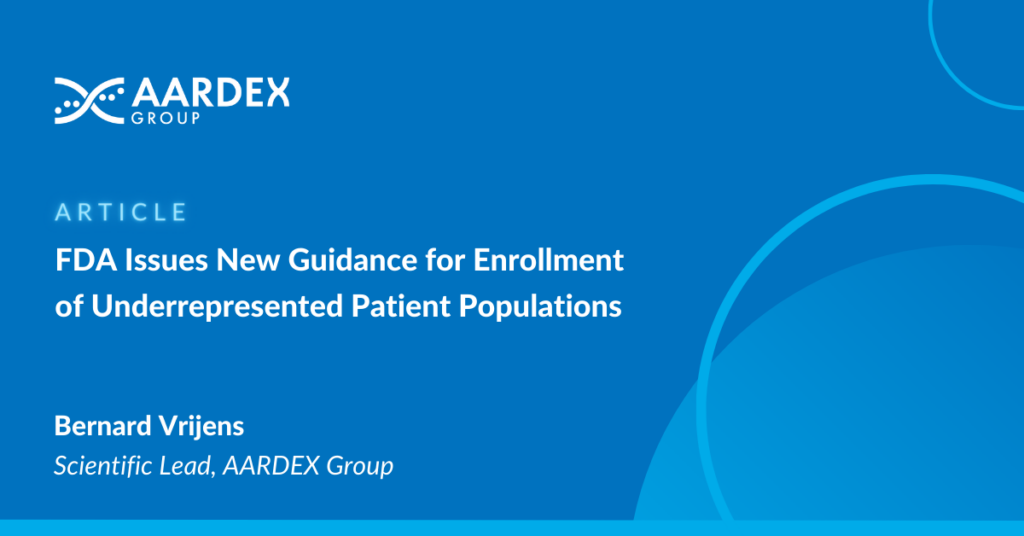Diversity in clinical research is a growing concern for sponsors as many factors can influence how an individual may react to certain drugs: age, biological sex, disabilities, chronic comorbidities, geographical location, gender identity, race, and ethnic background.
Thus, if the investigational product is to be scrutinized for safety and efficacy effectively, a diverse population of participants is a must-have to ensure that sponsors achieve a complete picture of the drug response across patient populations. However, that’s often not the case. In a 2020 analysis of the global participation in clinical trials, the FDA highlighted the severe lack of diversity in clinical trials. The report, FDA’s Center for Drug Evaluation and Research (CDER) Drug Trials Snapshots Summary Report 2015-2019, which aggregated five years of clinical trial demographic data for new molecular entities and original biologics from the Drugs Trials Snapshots (DTS) program, reported that of the 292, 537 participants enrolled in trials globally, 76% were white, 11% were Asian and only 7% were black1.
Draft FDA Diversity Guidance: A Focus on Race and Ethnicity
This month, furthering its commitment to improving diversity in clinical trials, the FDA published new draft Guidance, Diversity Plans to Improve Enrolment of Participants from Underrepresented Racial and Ethnic Populations in Clinical Trials, which is intended to expand on the recommendations set out by the FDA’s 2016 Guidance, Collection of Race and Ethnicity Data in Clinical Trials (October 2016), with more detail on when a Race and Ethnicity Plan is recommended and what sponsors should include in the Plan.
When a Race and Ethnicity Diversity Plan is Recommended
The guidance states that a plan is submitted for all medical products for which an IND submission is required and/or for which clinical studies are intended to support a marketing submission under section 351(a) of the Public Health Service Act for Standalone Biologics License Application (BLA), or under 505(b)(1) or 505(b)(2) of the Federal Food, Drug, and Cosmetic Act (the FD&C Act) for an NDA. A plan is also recommended for medical products for which an IDE is required and/or for which clinical studies are intended to support a device marketing submission, whether a premarket notification (501(k)), premarket approval (PMA) application, a De Novo classification request, or humanitarian device exemption (HDE) application. The FDA will evaluate the Race and Ethnic Diversity Plan as an important part of the sponsor’s development program.
Timeline and Process for Submitting the Plan
While the guidance states that sponsors may discuss their strategy to enroll a diverse study population at any time during the medical product’s development, it notes that:
- For drugs, sponsors should submit the Plan to the relevant IND application as soon as practicable during drug development but no later than when the sponsor is seeking feedback regarding the applicable pivotal trial(s) for the drug (often at the E0P2 meeting). The Plan can be submitted to the IND as part of a milestone meeting package, or on its own. Sponsors should request FDA feedback on the plan by including specific questions in a formal milestone meeting request and meeting package.
- For devices, sponsors should submit their plan as part of the investigational plan includes in the IDE application. To discuss the proposed enrolment strategy prior to submitting the plan to the IDE or for clinical studies not conducted under an IDE, sponsors should follow the Q-submission process for obtaining feedback or requesting a meeting with the FDA.
- For IND, IDE, or Q-Submissions containing a plan, sponsors should alert the FDA by marking the submission with “RACE AND ETHNICITY DIVERSITY PLAN” in a “large, bolded type” in the cover letter.
- Sponsors should include the Plan in the marketing application for the medical product as well as a description of the successes and challenges of implementing it.
Key Elements that Make Up the Race and Ethnicity Diversity Plan
- Enrollment Goals: Defined enrolment goals for underrepresented racial and ethnic participants. These goals should be based in part on the pre-specified protocol objectives of the clinical trial.
- Pharmacogenomics: The plan should begin with an assessment of any data that may indicate the potential for a medical product to have differential safety or effectiveness associated with race or ethnicity.
- For Devices: Data on the relevant factors for device performance (e.g., phenotypic, anatomical, or biological) should be collected to inform any differential effects across a diverse population
- Description of the Planned Assessment of Race and Ethnicity: in addition to other covariates with known potential to affect the safety and effectiveness of the medical product. In particular, for drugs, covariates with known potential to affect PK & PD should be assessed in order to facilitate exposure-response analyses and inform safe and effective dosing regimens across the intended patient population, as applicable.
- Variability in Performance Based on Factors Associated with Race and Ethnicity: When there are data that suggests that the medical product may perform differently based on factors associated with race or ethnicity, the Plan should specify the study design features that will support analyses that will inform the safety and effectiveness of the medical product in the relevant racial and ethnic populations. In some cases, it may be that, increased (i.e greater than proportional) enrolment of certain populations may be needed to elucidate potential important differences. When there are no data that indicate the race or ethnicity will impact safety or effectiveness, it is nonetheless appropriate that enrolment based on epidemiology of the disease.
- Safety and Effectiveness Associated with Race and Ethnicity: The plan should also outline the sponsors plan to collect data to explore the potential for differences in safety and/or effectiveness associated with race and ethnicity throughout the entire development life-cycle of the medical product and not just during the pivotal trial(s)
- Enrollment Based on Epidemiology: The FDA notes that while it may be challenging to set an enrolment goal based on the epidemiology of the disease due to limited data to characterize the incidence and/or prevalence of the disease across diverse racial/ethnic populations (e.g diseases that are defined by the presence of a rare molecular aberration). In these cases, the guidance encourages sponsors to leverage various data sources (e.g published literature and real-world data) to set enrolment goals; if this is not feasible, it may be appropriate to set the enrolment goal based on demographics in the overall population with the disease or condition.
- Pediatric Studies: inclusion of the clinical pediatric studies that are planned for inclusion as part of the pediatric development of the medical product.
Read the complete draft guidance PDF here.
Submit comments on the guidance to the FDA: https://www.regulations.gov/docket/FDA-2021-D-0789
References
https://www.fda.gov/media/143592/download1
About the Author
Bernard holds a PhD from the Department of Applied Mathematics and Informatics from Ghent University, Belgium. As Scientific Lead at AARDEX ® Group, Bernard oversees the research and development of sophisticated analytical methods for monitoring participant medication-taking behaviours. Along with providing guidance on adherence to Pharmaceutical, BioPharma, and Academic organizations, Bernard is a founding member of the International Society for Patient Adherence (ESPACOMP) and is an active member of several EU and US-funded consortiums that focus on adherence. Having co-authored several book chapters, over 100 peer-reviewed scientific papers, Bernard is considered an expert in his field.



